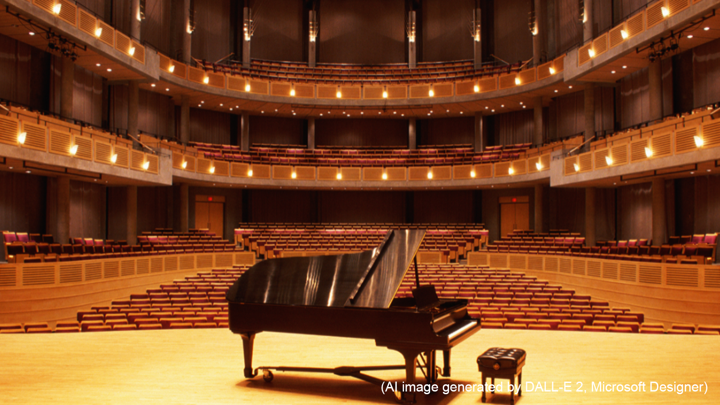#E0041 CO2 concentration visualization for COVID-19 infection prevention in concert halls

Monitoring Carbon Dioxide Concentrations in Real Time to Protect Against COVID-19
The COVID-19 pandemic has shaken the foundations of societal perception of safety in closed spaces and crowded events. To prevent coronavirus clusters (a concentration of infections in the same area at the same time), avoiding the three C’s, namely closed spaces with poor ventilation, crowded places with many people, and close contact for conversation and taking comprehensive countermeasures for event-specific infection routes is important.
The ventilation status, number of people, and their activity level inside a room are indicated by its carbon dioxide (CO2) concentration levels. Monitoring CO2 levels in real time inside a closed space can, therefore, provide immediate confirmation of its degree of ventilation, and, in turn, safety from airborne infection. An estimated CO2 concentration below 1,000 parts per million (ppm) is typically considered as an indicator of good ventilation.
With this idea, researchers from Japan, in a new study, monitored CO2 levels in real time inside a multi-purpose hall filled to half its capacity during a concert. The measured CO2 concentration was displayed on a screen installed inside the concert hall for the crowd, musicians, and staff to see.
The audience was asked to remain seated for the duration of the performance and not cheer (which would increase the CO2 concentration). It was announced that if CO2 concentration levels exceeded 3,000 ppm, the concert would be temporarily suspended for ventilation.
The average CO2 concentration during the performance was measured to be 505.6 ppm, while the maximum recorded value was 575 ppm. Both values were well within the safe limits necessary for sufficient ventilation. The measured values also agreed with that estimated by the Occupational Hygiene and Ergonomics Section of the Japan Society for Occupational Health using a Ventilation Simulator (646 ppm).
An important aspect of visualizing the CO2 levels was the sense of security it provided to the crowd. When asked in an anonymous survey, majority of the crowd noted that the visualization made them feel very secure and that they would like to see this implemented across event venues in the future. No negative feedback was recorded in any of the survey questions.
These results show that visualizing CO2 concentration could be an effective preventative measure against airborne infection. Given the increased social anxiety around the pandemic, such a clear and readily available visualization could go a long way in instilling calmness in people among large crowds or in closed spaces.

Link to the original journal article:
https://www.jstage.jst.go.jp/article/eohp/3/1/3_2021-0010-OA/_article/
Title of the paper:
CO2 concentration visualization for COVID-19 infection prevention in concert halls
Authors:
Hiroko Kitamura, Yo Ishigaki, Tomoko Kuriyama, Takashi Moritake




